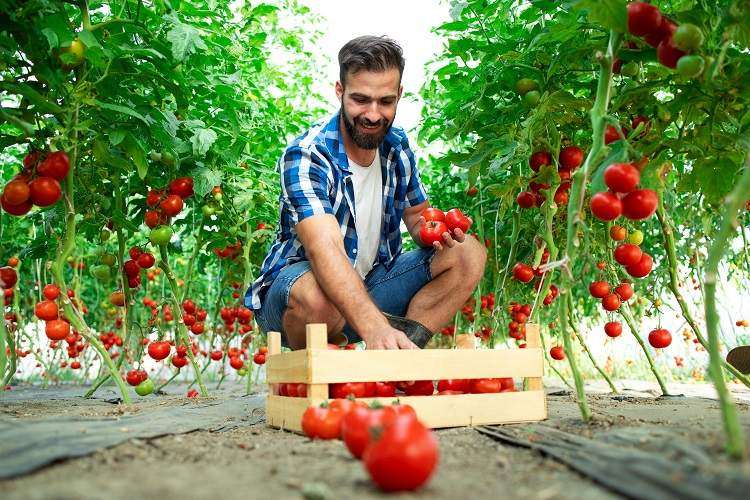
Tomato is a very common fruit and maybe a king of the kitchen. It is a rounded red fruit that looks very tempting. Be a tomato king by starting profitable tomato farming. Every farmer who is planting tomatoes wants extreme profit, but due to lack of knowledge, they are not able to make it more profitable. Become the king of farms and produce tomatoes with many profits. Here you can get the information regarding tomatoes from planting to harvesting which will help you to run the farm according to your needs and generate revenue. First, we will start with the planting of tomatoes.
Tomato is a Fruit not Vegetable
Tomato botanically called a berry with a much lower sugar content than other fruits. Therefore, it is not a ‘sweet’ fruit. Many different ‘fruit vegetables’ like avocado, eggplants, cucumbers, etc. that are botanically fruits but cooked like vegetables.
You can find tomatoes in every kitchen globally in different forms. It is used in different ways in salads, juices, sauces, and ingredients for various culinary preparations.
No wonder tomato is not a vegetable that we normally refer to as a berry-type fruit grown worldwide. Nevertheless, it is the largest vegetable crop raised in the world after potato and sweet potato. China holds a number one rank as the largest producer of tomatoes. Andhra Pradesh is the largest tomato growing state in India.
Cultivation of Tomatoes
Tomato farming is one of the most productive agriculture businesses. Planting tomatoes is an excellent option for those who are looking to harvest a commercial crop four times a year. Tomato farming is possible both in traditional farming and greenhouse farming.
1. Climate Conditions of Tomato Farming
Tomatoes are warm-season vegetables and sun-worshipper.
It is a warm-season crop and requires an ideal temperature of 21⁰C to 23⁰C. Tomatoes are susceptible to climatic changes. For ideal growth and productivity, tomatoes need different climatic conditions at every growth stage, such as seed germination, flowering, fruiting, etc. Tomato needs a warm and cool climate for farming with medium sunlight. It can’t tolerate high humidity and frost. Similarly, both heavy rainfall and a continued dry season affect the growth of tomato plants.
2. Soil Condition for Tomato Farming
Although it can thrive on every type of soil, from light sandy soil to heavy clayey soil. However, for rich productivity, farmers plant tomatoes on silt-loam soils. This is because the soil with high organic content is naturally high in moisture which tomato plants cannot tolerate. Therefore, if the soil is rich and mixes with mineral content to add organic content, it will help increase productivity.
3. Land Preparation for Tomato Farming
The land for growing tomatoes must be thoroughly fragmented through repeated ploughing. It needs about 5 ploughings before farming. After ploughing, you should start levelling. To plough the field better, the Powertrac EURO 60 tractor would help you to increase your farm’s productivity. It would help if you levelled the land and beds equally to planting the tomato seeds. However, it would help if you sterilized the land after ploughing to destroy the disease-causing pests and bacteria.
4. Best Season for Tomato Farming
Tomatoes can be grown during any season. In the southern parts, tomatoes are planted in three cycles:
- December to January
- June to July
- September to October
In the northern plains, the planting schedule is as below:
- July (Kharif crop)
- October to November (Rabi crop)
- February months (Zaid season)
5. Harvesting of Tomatoes
You can harvest tomatoes within 2-3 months of the plantation. Around 8-10 harvesting of tomatoes is done every year according to the market demand. The average tomato crop produced per acre in India is around 10 tonnes. Therefore, the farmer should take care during harvesting the tomatoes. According to the modern method, you should use a harvester and a robust HP tractor to pull the harvester weight. You should choose the Massey Ferguson 241 tractor for a better lifting process, perfect for lifting more heavyweight.
We hope you like this content and find it very knowledgeable. For more information regarding farming business and farm equipment, stay connected with us.


